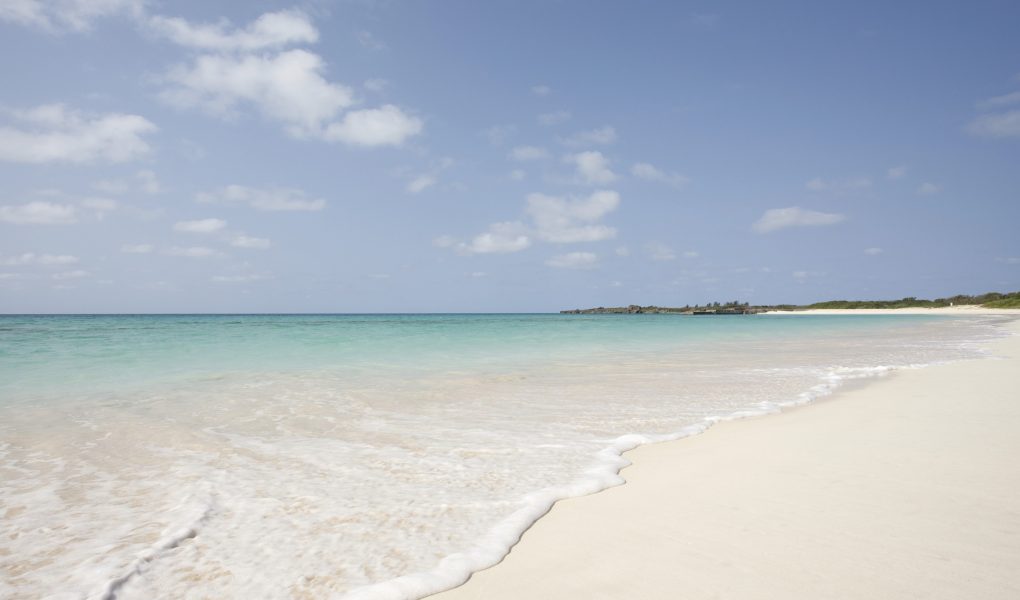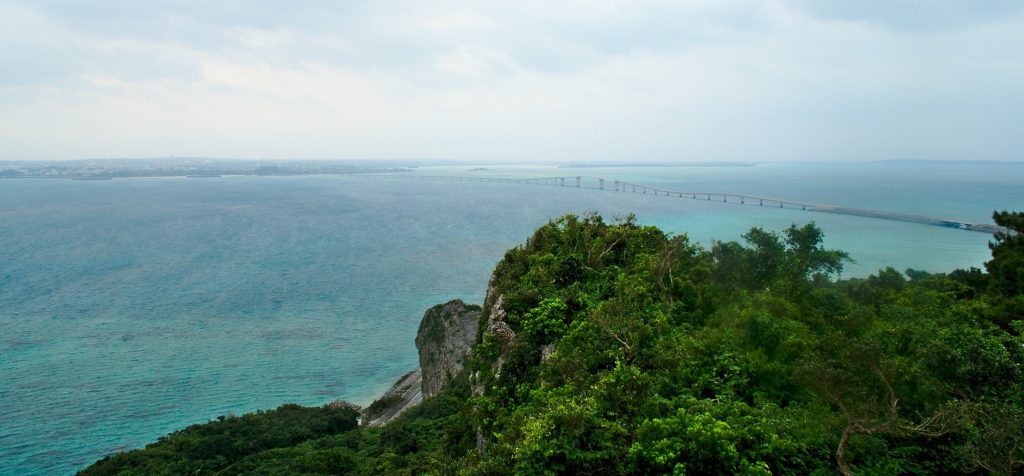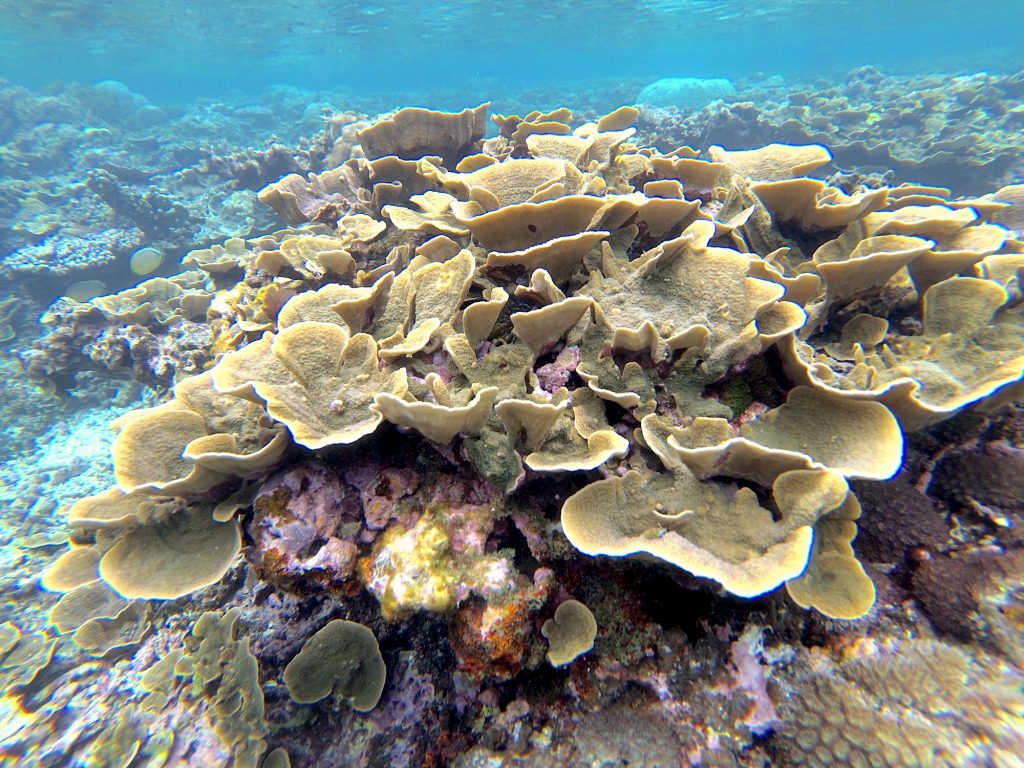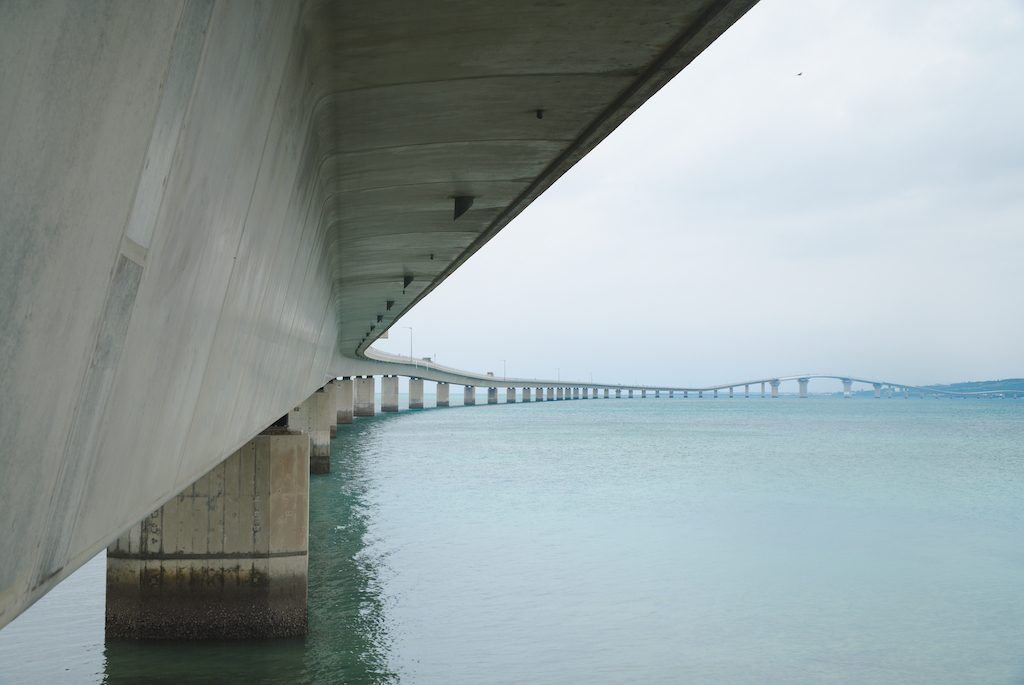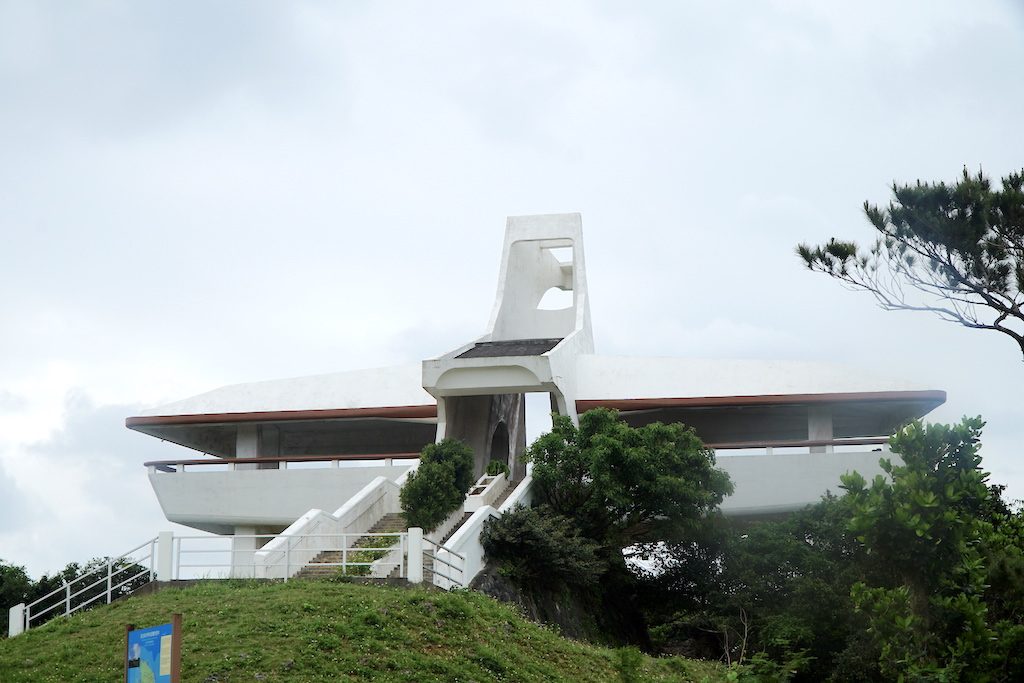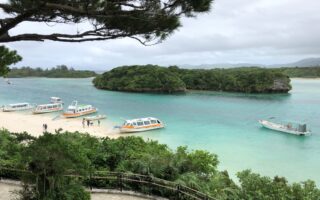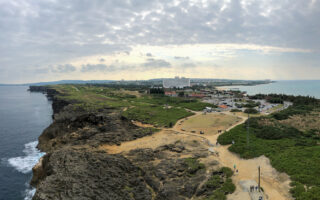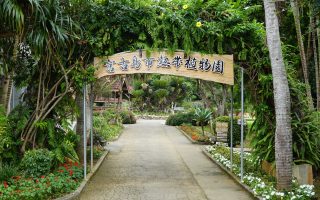Irabu island is the second largest of the islands in the Miyako island group. It lies on the western side of Miyakojima to which it is connected by a 3’540m (2.2mi) long bridge. On the western side of Irabu is the smaller Shimoji island, where there is an international airport.
The size of Irabu island makes it suitable for a day trip from Miyakojima, but it is also a terrific place to book accommodation for your entire stay. The towns are big enough that they have restaurants and super markets, the beaches are gorgeous and it is less busy than Miyakojima.
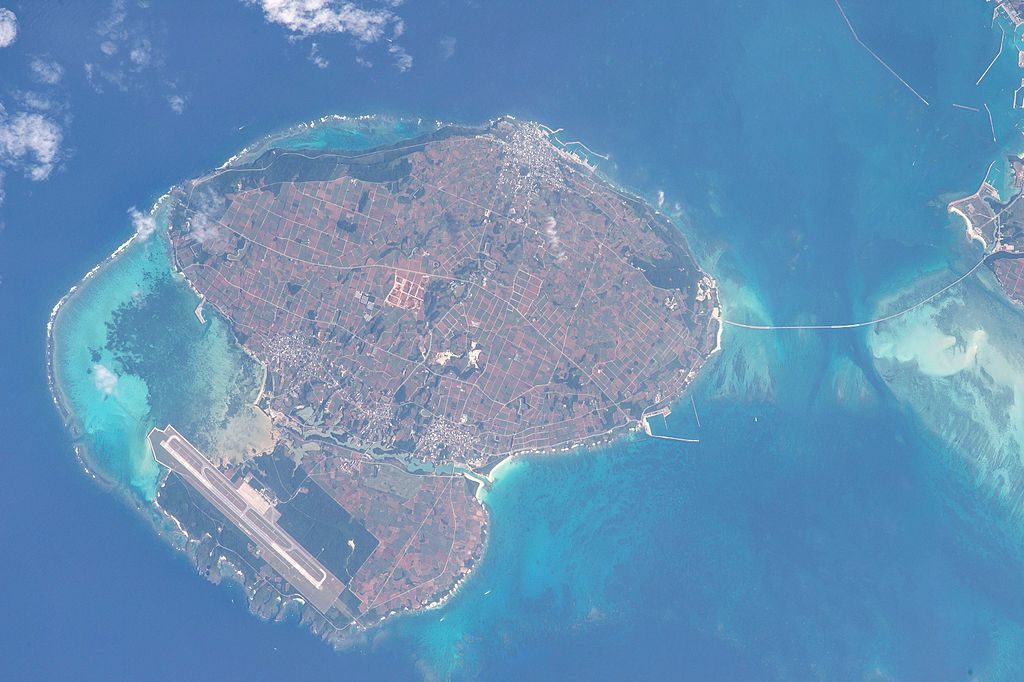
Facts about Irabu
Size: 29.06 km² (ex. Shimojima)
Population: 5’059 (2018)
Irabu bridge: 3,540m (2015)
Highest point: Makiyama, 89m
Airport: Shimojishima Airport (SHI) has seasonal flights to Tokyo Narita, Osaka and Hong Kong.
The bridge between Irabu island and Miyakojima only opened in 2015. Until then there was regular ferry service between the two islands. The opening of the bridge has given ground for the use of Shimojishima airport as a secondary Miyako airport, and seasonal domestic and international flights are beginning to show up. The combination of the new bridge and the newly active airport has given a serious boost to the construction of resorts and restaurants on both Shimoji and Irabu.
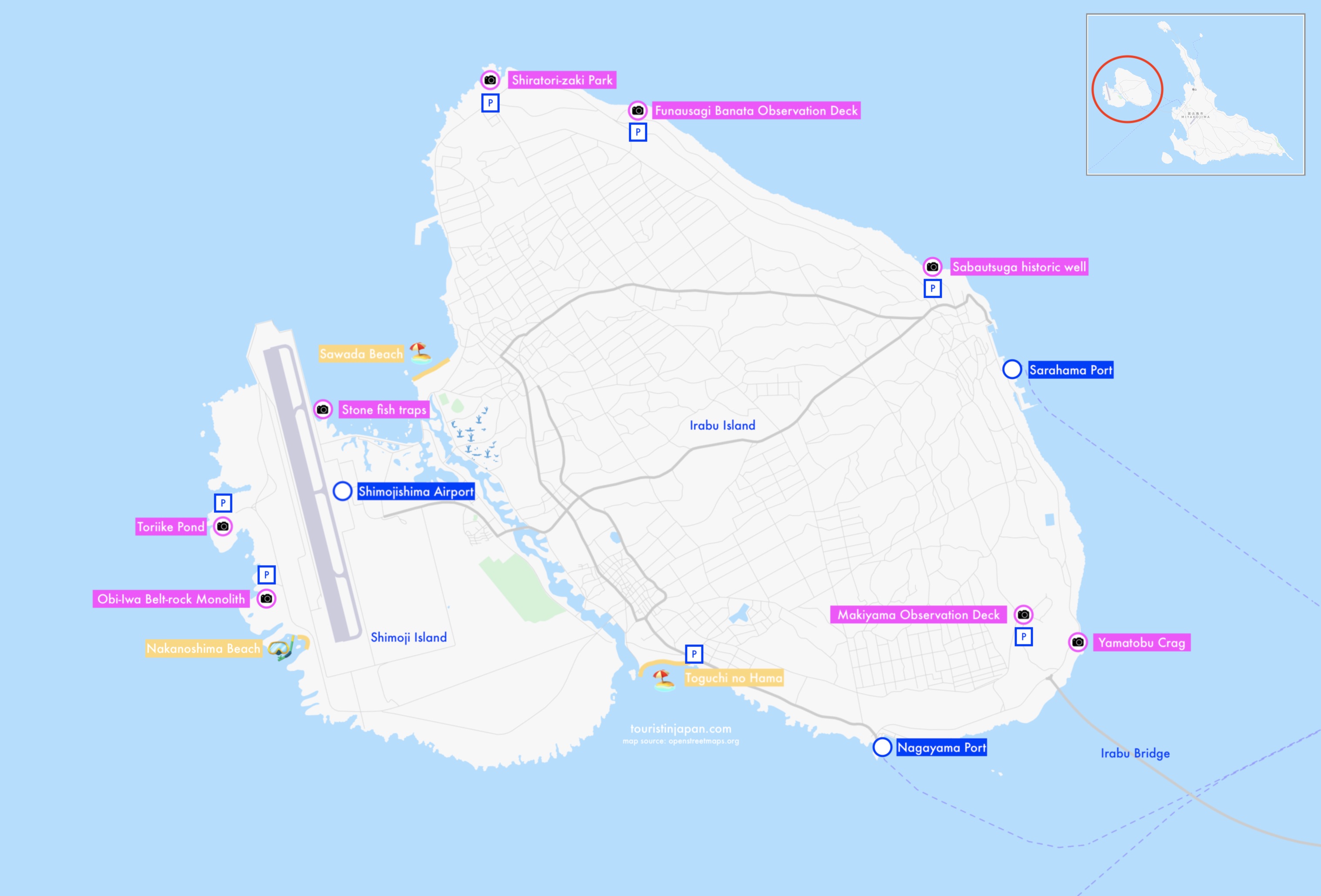
Spend a day on Irabu and Shimoji
If you want to do a day trip from Miyakojima to Irabu, then grab your bathing suit and your snorkel gear. Once in the car, head to the magnificent Irabu bridge. Just before you cross the bridge, you should get out at the small parking lot and enjoy the spectacular view of the more than 3’540m long, curved construction.
Continue across the bridge, where there are also good chances of spotting sea turtles in the waters below the bridge. When you reach Irabu island you should head directly to the Makiyama observatory. The observatory, which is shaped like a bird, overlooks Miyakojima and is the only place where you can see both Irabu bridge, Kurima bridge and Ikema bridge at the same time. The mountain is named after the Maki bird (grey-faced buzzard) which comes here in the fall to spend the winter. There is a nature trail near the observatory, which is recommended for exploring the beautiful surroundings.
If you brought your swimming gear, then head to Toguchi no Hama beach for a nice swim in the crystal clear water. In case not, then stop by anyway to enjoy the spectacular sight of a perfect beach. If you are into snorkeling, then cross the bridge to Shimoji island and continue to Nakanoshima beach for some great coral and marine life.
Just north of Nakanoshima beach is the Shimoji Obi-Iwa rock. This enormous boulder is said to have arrived here with the tsunami that hit Miyako in 1771. It is impressive to stand next to this mastodon of a stone, and imagine the ocean moving it. Over the years, the stone has become a place of prayer for good fishing.
A step further north, and you reach Toriike pond. This pond is on the cover of many tourism brochures for Irabu/shimoji, and for good reason. It is truly a beautiful area. There appears to be two separate ponds, but in fact they are connected underground. There is also an underwater cave associated with the pond, which has made it a highly regarded diving spot.
Tracing the perimeter of the island brings you past the end of the airport runway, and to the other side, where you can make a quick stop and see the historic stone fishing traps – constructions used for centuries in Miyako to trap fish by help of the tidal water.
Crossing back over from Shimoji to Irabu, you will pass the pristine Sawada beach on your way north to beautiful cape Shiratori.
Heading down the east-side of the island you can make a stop by Funausagi Banata observation deck – another viewpoint shaped like a gray-faced buzzard. This used to be a place where you bid travelers farewell as they sailed away from the island.
Irabu Bridge, Miyakojima. Photo © touristinjapan.com.
As you near the town of Sarahama, you will pass Sabautsuga freshwater spring. The well here was the towns only supply of water up until 1966. The well and the stairs leading down to the well are together designated a “historic site”.
You will pass through Sarahama, where you can make a stop for food, drinks or to quickly explore the little town. Then continue to the last stop of the day, Yamatobu Crag. This massive boulder of 25m x 18m is really hard to miss. You can’t drive past it without wanting to stop. It looks beautiful, with the turquoise water under it. The stone is thought to have marked the entrance to an area where the first people on Irabu settled.
Beaches of Irabu
Irabu and Shimoji islands have a large number of small, secluded beaches. This list below mentions only the major beaches which are easily accessible by car. If you want a small beach all to yourself, it won’t be a problem. just go exploring. The north-western sides of both islands have a lot to choose from.
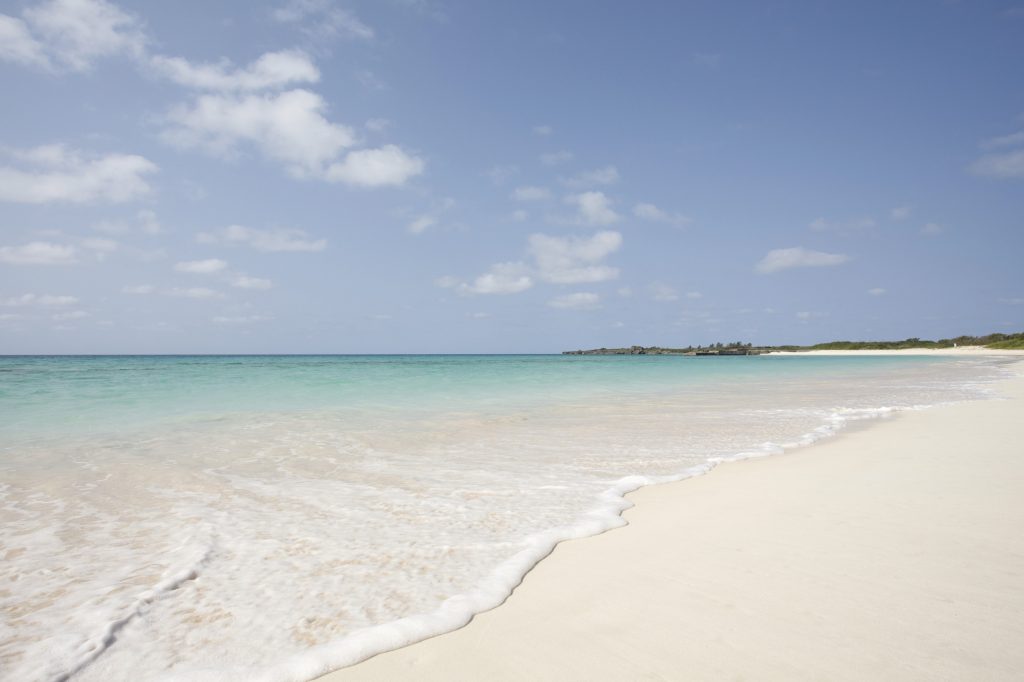
Toguchi no Hama
Toguchi beach is an amazing white sand beach with crystal clear blue water. The beach is located on the south side of Irabu Island and has a view of Kurima Island and Miyako Island.
Facilities: Showers, Toilets, Parking.
Photo ©OCVB. used with permission.
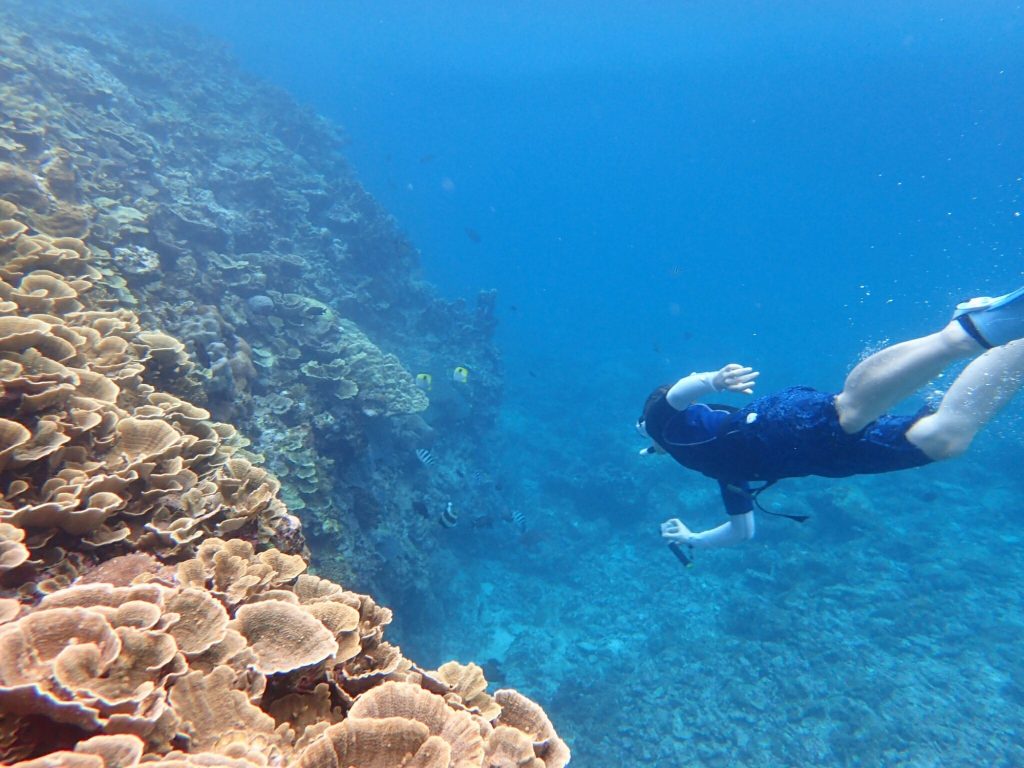
Nakanoshima beach
Nakanoshima beach is an amazing snorkeling location.
While the beach is not ideal for sunbathing, it does have an incredible coral and fish life.
Nakanoshima is probably one of the best beach-access snorkeling spots in Miyakojima.
Facilities: Roadside parking.
Photo © touristinjapan.com
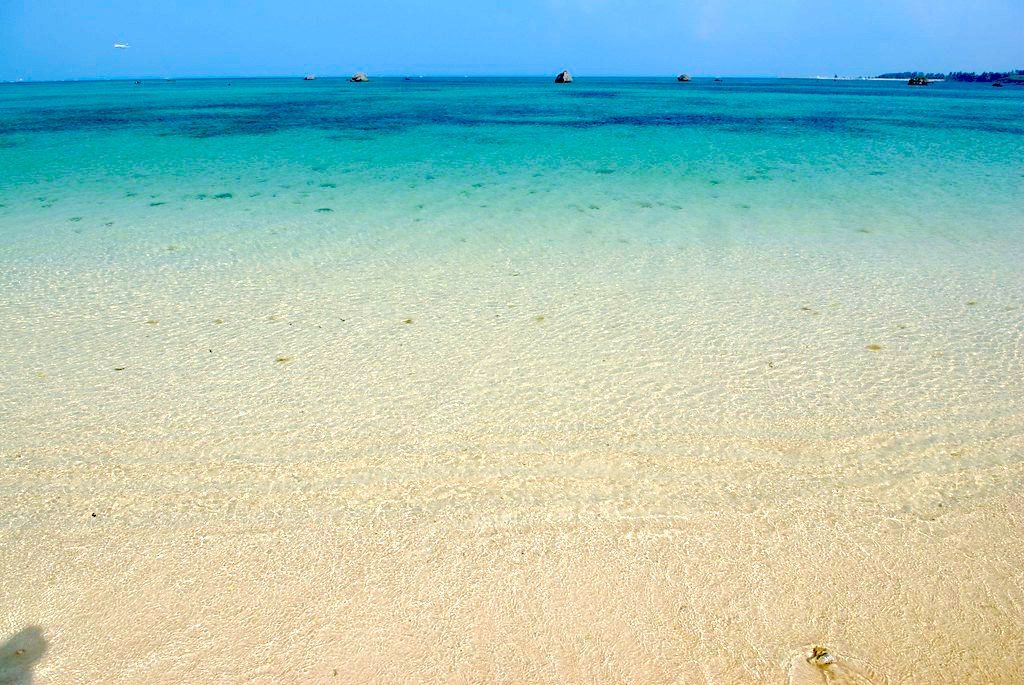
Sawada Beach
Sawada Beach is especially famous for its shallow water and large rocks. The water remains shallow relatively far out, giving the surface a uniquely smooth and mirror-like appearance. With a north-western orientation, Sawada Beach is a great place to watch the sunset. The reflections on the shallow water can be magical.
Facilities: Showers, Toilets, Parking.
Photo by sota. Licensed under CC BY-SA 2.0.
Attractions of Irabu
Irabu and Shimoji islands have a number of interesting things for visitors to see. The attractions range from observatories, to natural phenomena and cultural and historic points of interest.
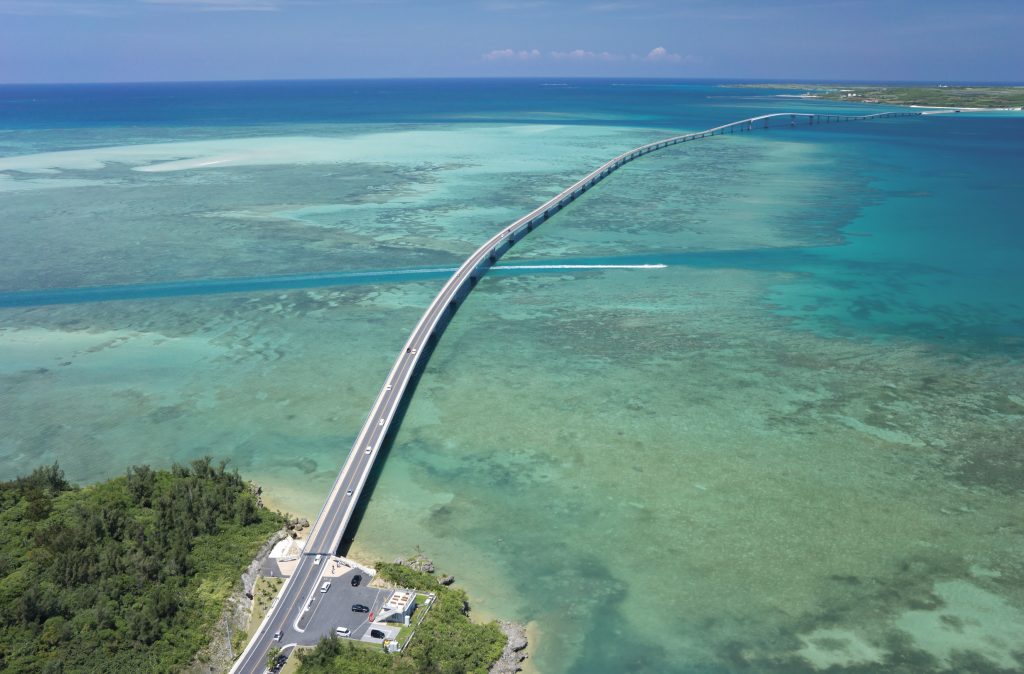
Irabu bridge
This 3’540m long bridge connects Miyakojima and Irabujima. The bridge opened in 2015, and is probably as close as a bridge ever comes to being art. It curves its way over the water like it is a natural feature. Before crossing the bridge, stop at the parking lot on the Miyako side to enjoy the magnificent view.
Photo © OCVB. Used with permission.
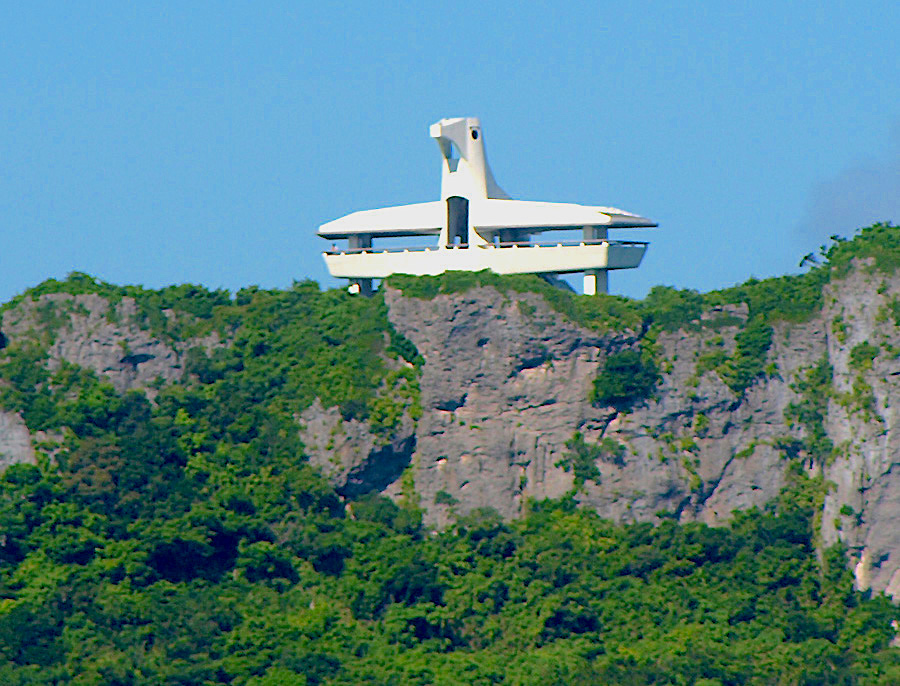
Makiyama observation deck and park
Makiyama observatory, which is shaped like a bird, overlooks Miyakojima and is the only place where you can see both Irabu bridge, Kurima bridge and Ikema bridge at the same time. The mountain on which it sits, is named after the Maki bird (grey-faced buzzard) which comes here in the fall to spend the winter. There is also a nature trail near the observatory.
Photo by Paipateroma. Licensed under CC BY 3.0. Modified.
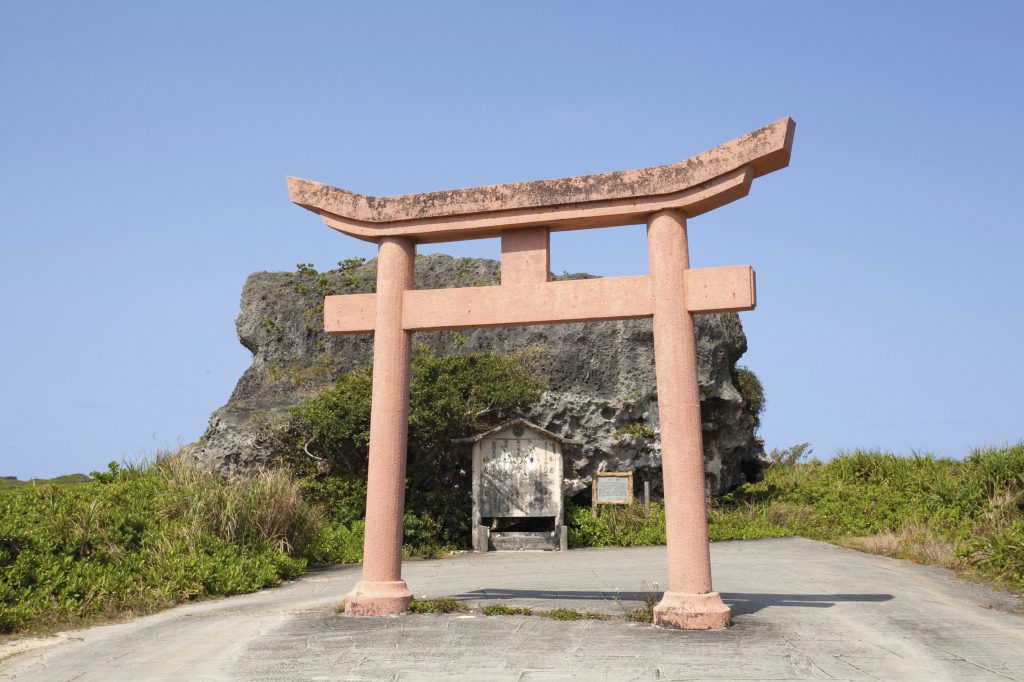
Obi-Iwa Belt Rock Monolith
This gigantic rock is supposed to have arrived here with the tsunami that hit Miyako in 1771. It is fascinating to stand next to this massive natural feature, and imagine the ocean moving it. Over the years, the stone has become a place of prayer for good fishing.
Photo © OCVB. Used with permission.
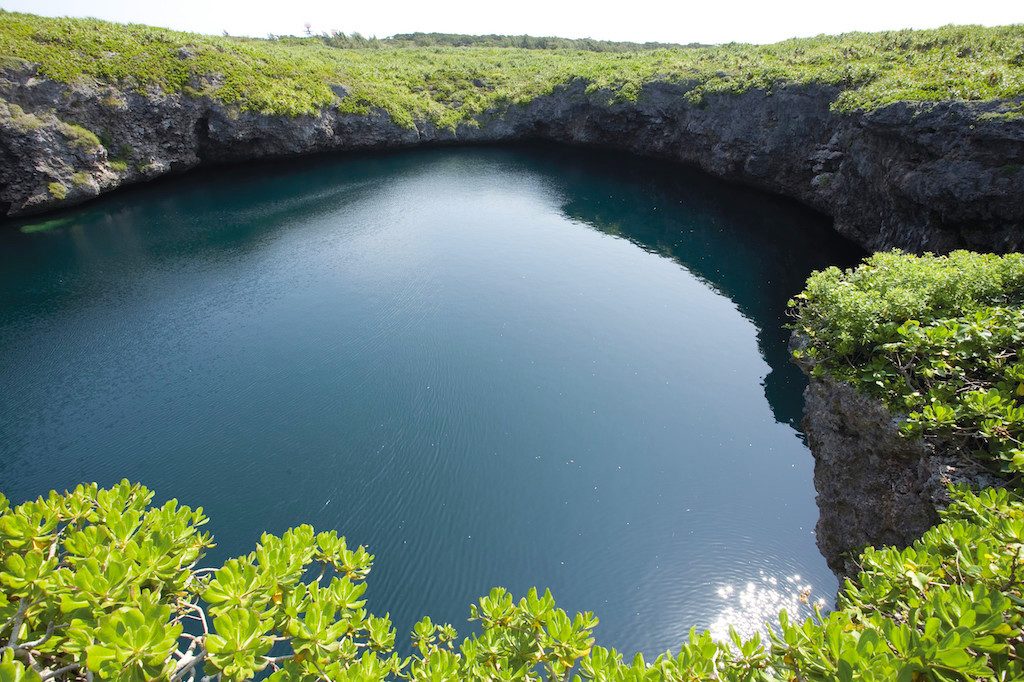
Toriike Pond
Toriike Pond is on the cover of many brochures in Miyako, and for good reason. It is truly a beautiful, natural area. There appears to be two separate ponds, however they are connected underground. There is also an underwater cave associated with the pond, which has made it a highly regarded diving spot. The spot is designated a Natural Monument of Okinawa – and it has a legend of a mermaid!
Photo © OCVB. Used with permission.
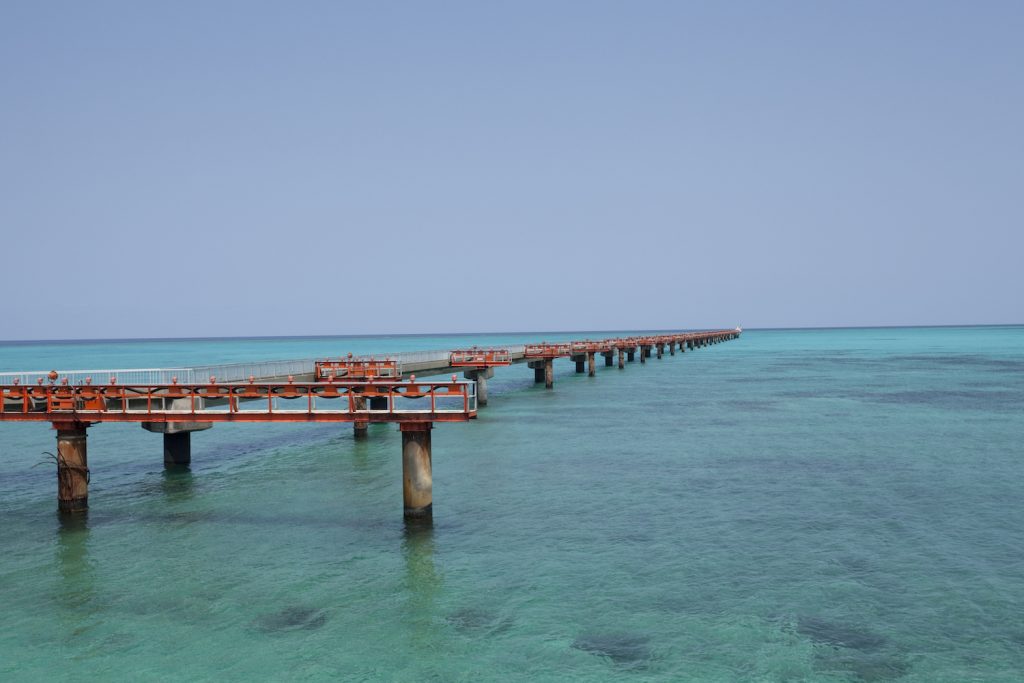
Runway 17 end
This is a fun spot on Shimoji island. At the northern end of the airport runway, a road wraps around the endge of the tarmac, and allows you to come really close to the runway. You can see the light-guide which is installed over the water, to guide the planes in. While Shimojijima airport isn’t used so frequently yet, you might still be able to see a plane land if you are lucky.
Photo © OCVB. Used with permission.

Stone fish traps
At the this spot, on the eastern side of the airport runway, you can see old stone fishing traps. This ancient fishing technique has been widely used, and works by trapping the fish in an area fenced off with stones. As the tide goes down, the fish have no way to leave the area and are easy to pick. It’s an interesting historical location. Miyako city museum also has a display dedicated to this old technique.
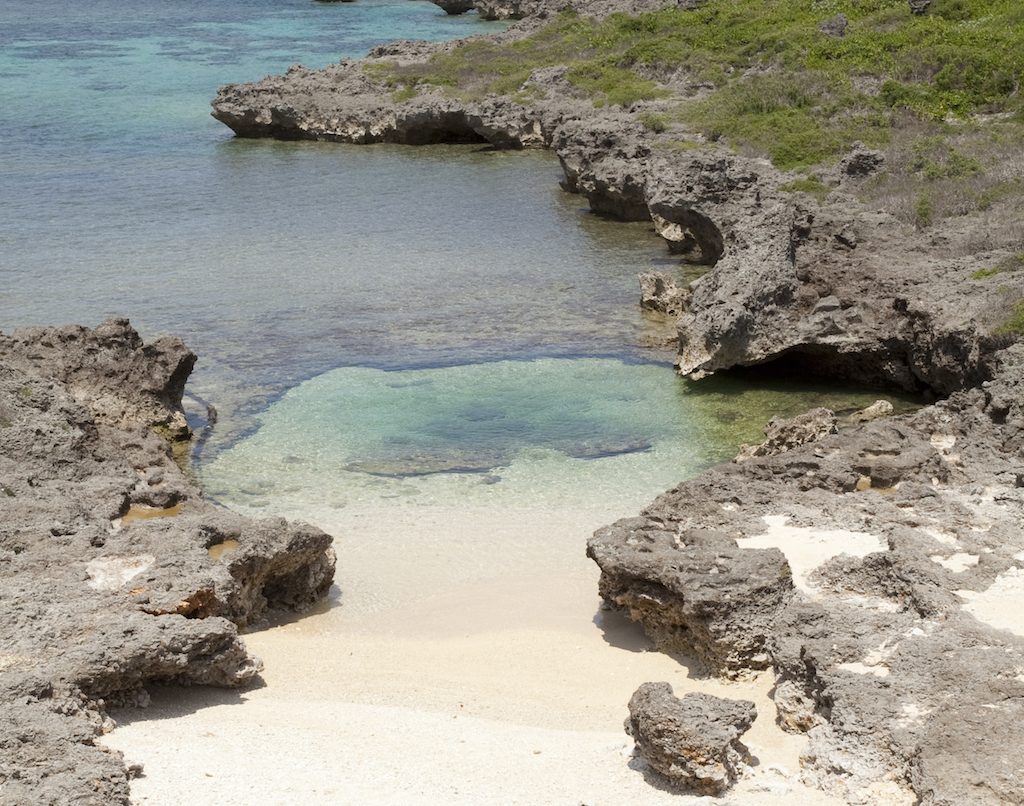
Cape Shiratori-zaki park
This beautiful area is a great place to go on a little nature walk and enjoy some of Irabus nicest coast line. There is a network of small paths to be found here.
Photo © OCVB. Used with permission.
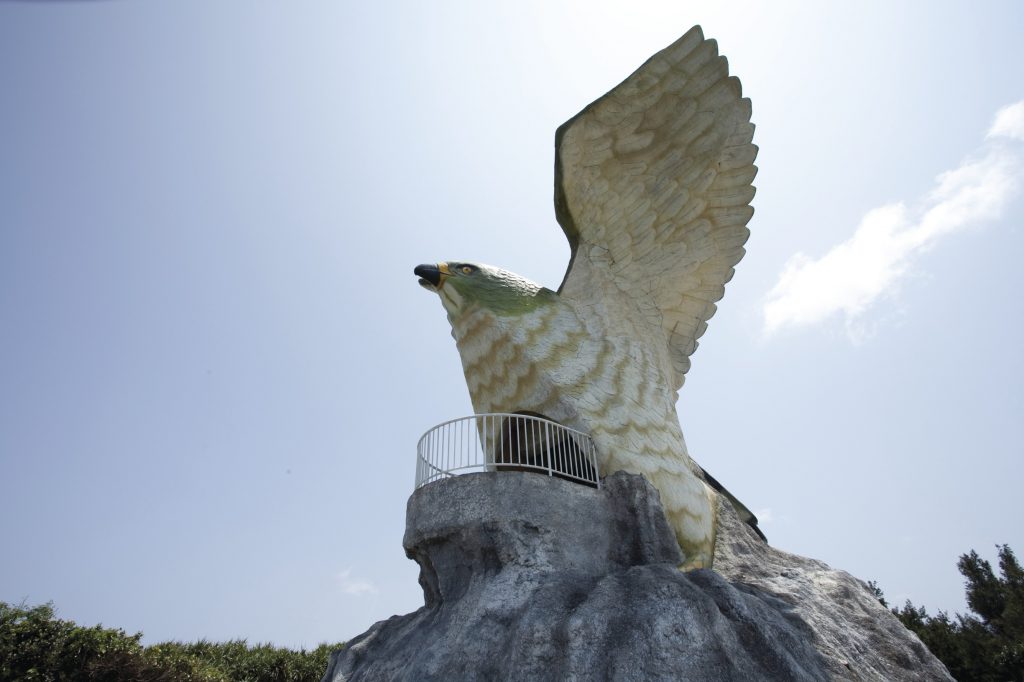
Funausagi Banata observation deck
Funausagi Banata is the second observatory in the shape of a bird. In fact, it is the same type of bird as the observatory on Makiyama – however a little more realistic representation this time. Funausagi Banata means “cliff for seeing off a ship” and hence would be the place where you would say farewell to a ship leaving the island (probably because it’s so high).
Photo © OCVB. Used with permission.

Sabautsuga historic well
Sabautsuga well was Sarahama towns only supply of water up until 1966. The well and the stairs leading down to the well are together designated a “historic site”. It is an interestic place to explore, and it’s fascinating to imagine life on the island prior to the arrival of modern ammeneties.
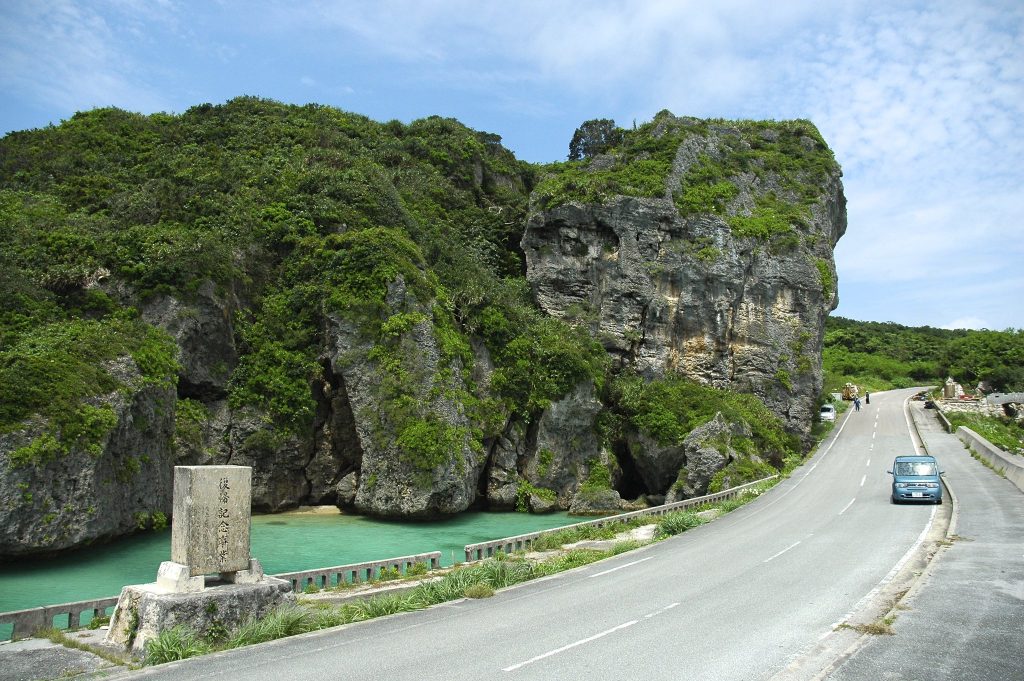
Yamatobu Crag
Yamatobu is a massive boulder of 25m x 18m and it is really hard to overlook. You can’t drive past it without wanting to stop. The rock looks beautiful with the turquoise water under it and covered in lush greenery. The stone is thought to have marked the entrance to an area where the first people on Irabu settled.
Photo by Ken Yamaguchi. Licensed under CC BY-SA 2.0.
Restaurants of Irabu
Irabu being the second-largest of the islands in Miyako, there are actually a few small towns around. In each you will find local restaurants and cafes where you can get lunch or dinner. The list below is not exhaustive due to the large selection of eateries, but mentions a select few which are worth considering.
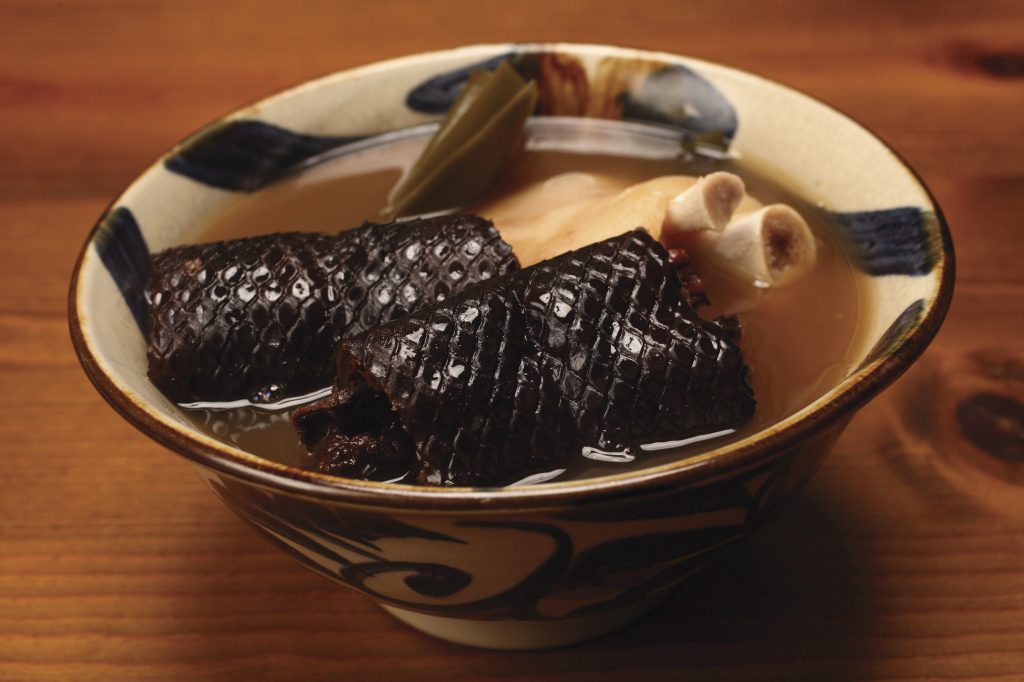
Find Restaurants
Photo ©OCVB
Accommodation of Irabu
Hotel Recommendations for Irabu and Shimoji islands:
Casa de Hamaca (budget)
This 1-star guest house is really fun and different. You get to sleep in hammocks – true island style! The house is located on the western side of Irabu island, in Kuninaka. If you want to live the real, relaxed island style, but on a low budget, then this might be for you.
Book now
Irabu Island Dolphin (mid-class)
This is actually a couple of apartments which house 5 people each. The price is surprisingly affordable for sleeping an entire family. The location on the eastern side of Irabu island in Sarahama is ideal as you have easy access to Miyakojima via Irabu bridge.
Book now
IRAPH SUI (Luxury)
The 5-star Iraph Sui Luxury Collection Hotel is one of the top hotels in Miyako, and for sure has the best location in Irabu. The hotel has pool and a restaurant and is located in walking distance to the magnificent Toguchi beach.
Book now
Find more hotels in Miyakojima
Tours and Experiences of Miyakojima
- Stargazing & Nighttime Jungle Tour at Miyakojima
- Pumpkin Cave Tour with Snorkeling or SUP or Canoeing
- Half-day or 1-day snorkeling with SUP or Canoeing
- Snorkeling with Turtles in the Blue Sea of Miyakojima
- SUP Experience at a breathtaking beach on Miyakojima
- Experience the Natural Aquarium of Miyakojima sea
- Caving in Miyakojimas Pumpkin Cave
- Miyakojima Adventure: SUP or Canoe, snorkeling, caving
Getting there
By plane: Shimojishima has an international airport which is serviced seasonally. There are flights from Tokyo, Kyoto and Hong Kong. Alternatively one can fly to Miyakojima airport on the main island. There are far more connections here.
Look for flights to Miyakojima or Shimojishima
By car: from Miyako island, route 252 takes you across Irabu bridge to Irabu island.
By bus: There are busses on the Miyako islands, but they are not well documented nor frequent. If you must take a bus, then you can find information about the stops on kotsu-okinawa.org. It is possible to transfer from Hirara on the main island to Irabu, or from Shimoji Airport to a few stops on Irabu.
Cover photo ©OCVB

